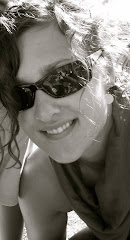Thursday, January 14, 2010
Tucker Chapters 1 &13
I have always struggled with math and I had a hard time in school in most of my math classes. I can handled the basic stuff, but beyond that, it's hit or miss. I remember feeling so frustrated, so I think it is really important to be able to create an environment where math can be taught, practiced and absorbed in a variety of different ways. It doesn't have to be all cut and dry. If we can give students a positive impression of math by creating different activities, hands on and individualized instruction, then maybe kids will warm up to and put more effort into it and develop an interest so that it doesn't seem like such an impossible task as the years go on and the material gets even harder.
Sunday, January 10, 2010
Gipe chapters 8 & 9
I think it’s important to keep in mind the interconnectivity of the reading and writing processes, that they support each other and one cannot functionally exist without the other. Maybe as teachers we should encourage our students to seek out alternate reading materials beyond classroom text books to find magazines, newspapers, even product labels! Whatever it takes to peak a child’s interest and promote independent reading, because in the long run, these sorts of activities will positively influence the reading and writing relationship. If our students don’t have access to these types of materials, we should be busy collecting them and bringing them in, offering them as a “treat” if possible or a new and exciting addition to text book exercises. If students can find something that interests them personally, they will have more motivation to write and express themselves for their own purposes.
It’s an excellent idea to begin “creative” writing activities at an early age. Structured and nonstructured reading activities are a great way to explore a range of writing styles and genres, especially if you can turn them into word games where the whole classroom can participate.
Dissecting all of the different components that make up vocabulary and word recognition is an extensive process! It is something that comes so easily as an educated adult – I don’t even recall all of the effort that must have gone into learning how to understand words, match sounds with letters, and put it all together to make a sentence. It must be so frustrating for students with learning disabilities who struggle to put the pieces together. It will be helpful to be aware of the different ways to help students learn how to do this.
It’s an excellent idea to begin “creative” writing activities at an early age. Structured and nonstructured reading activities are a great way to explore a range of writing styles and genres, especially if you can turn them into word games where the whole classroom can participate.
Dissecting all of the different components that make up vocabulary and word recognition is an extensive process! It is something that comes so easily as an educated adult – I don’t even recall all of the effort that must have gone into learning how to understand words, match sounds with letters, and put it all together to make a sentence. It must be so frustrating for students with learning disabilities who struggle to put the pieces together. It will be helpful to be aware of the different ways to help students learn how to do this.
Subscribe to:
Comments (Atom)

